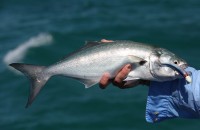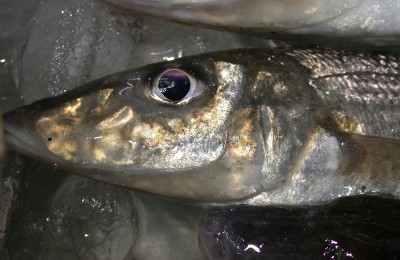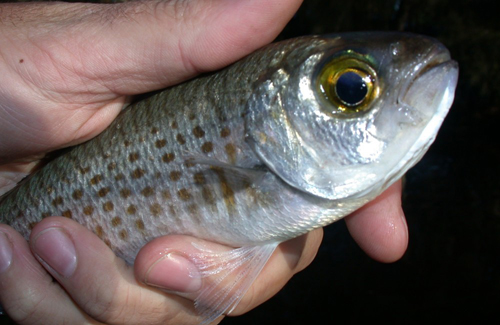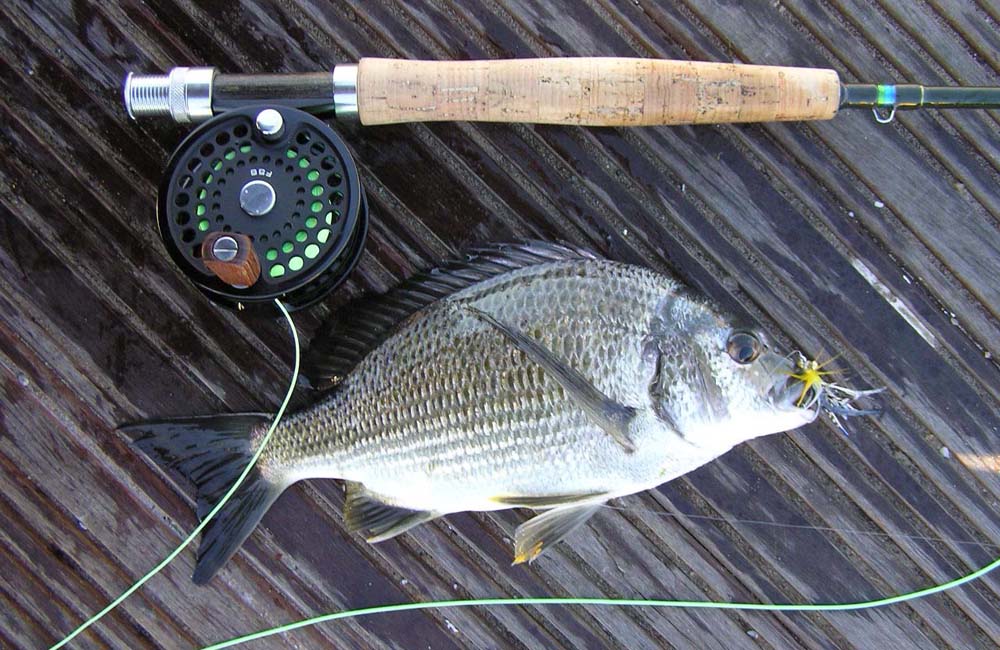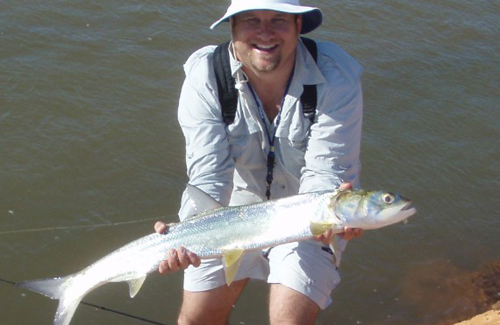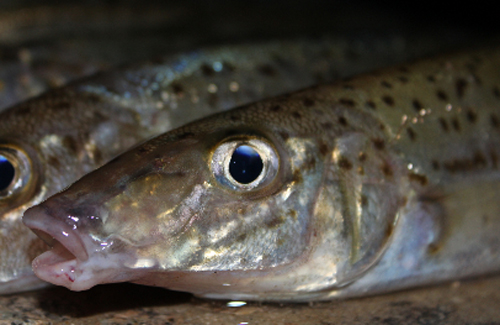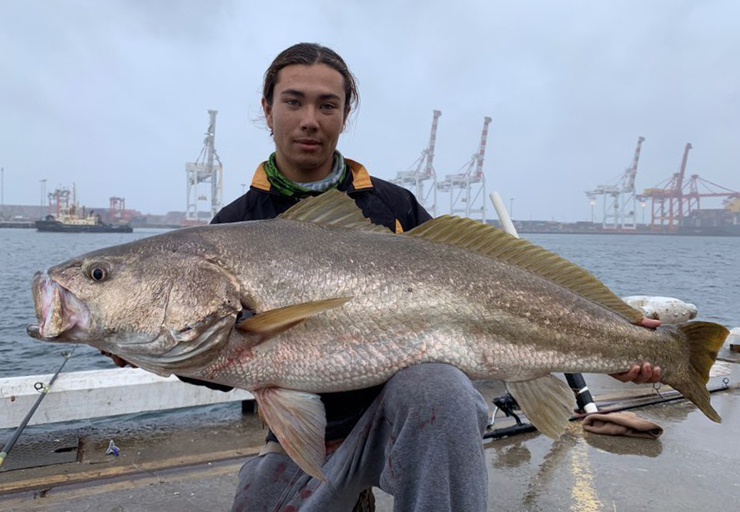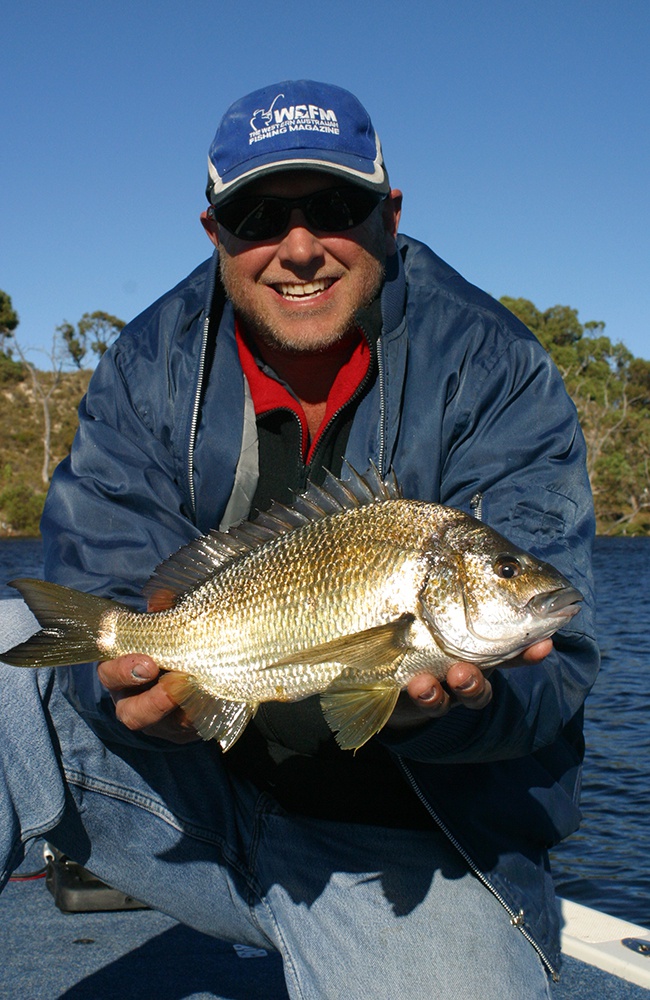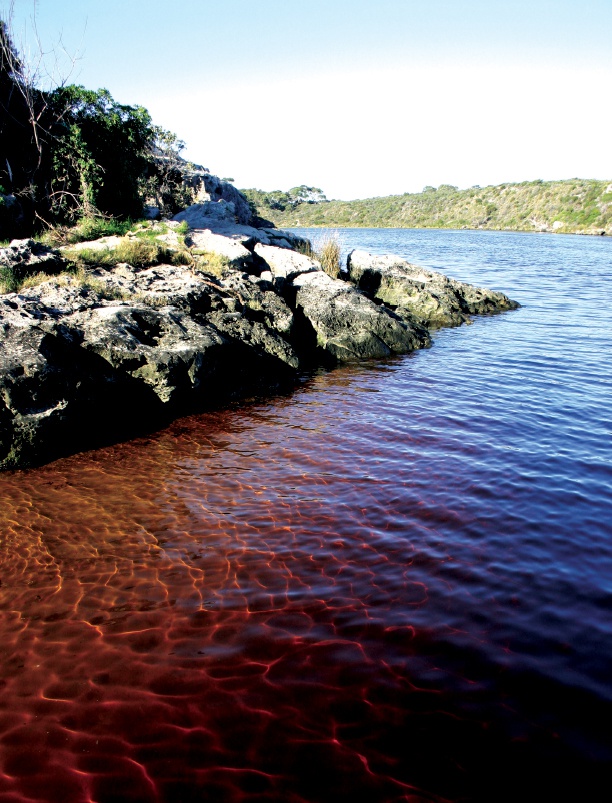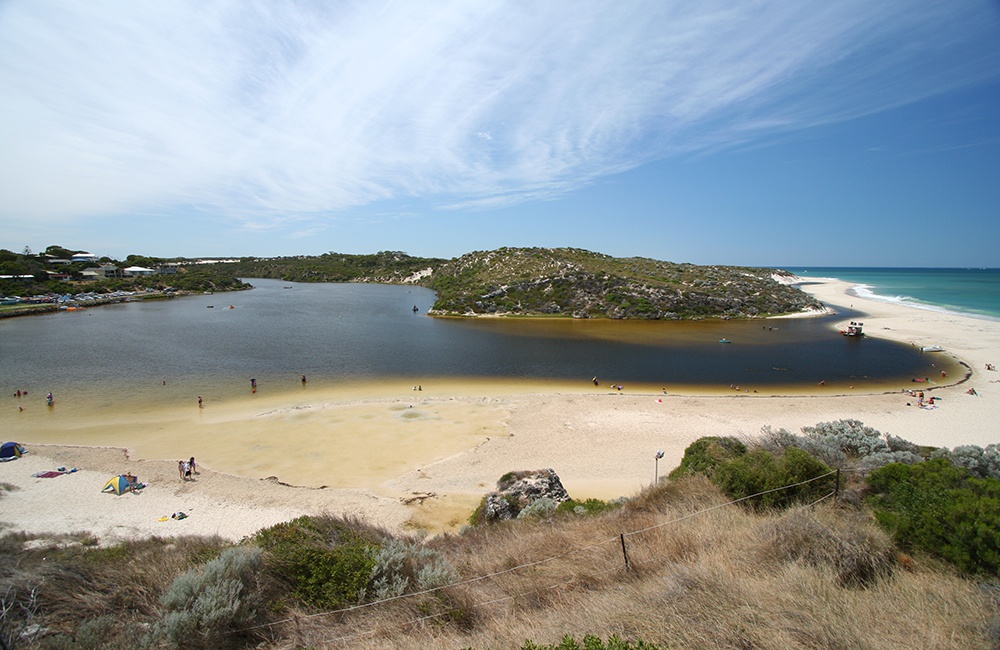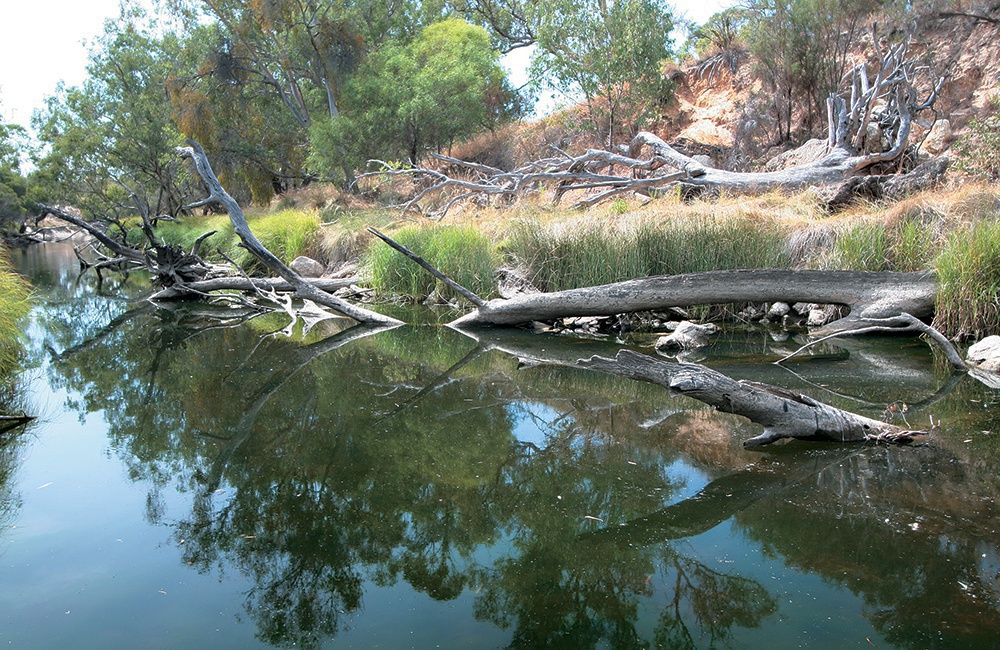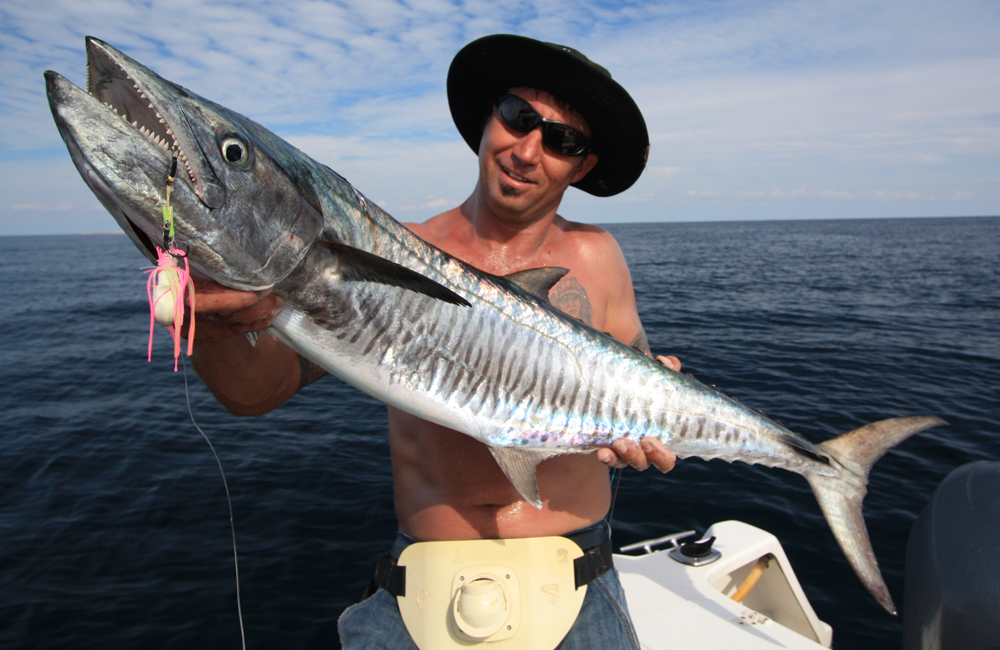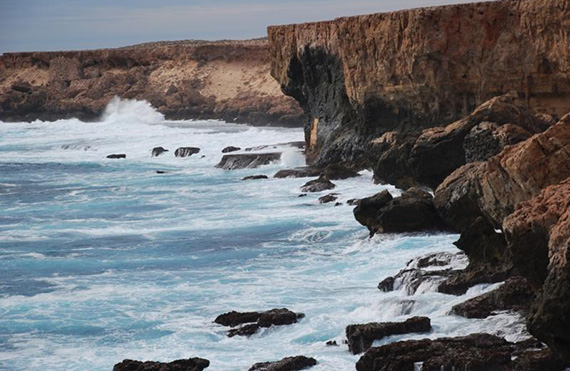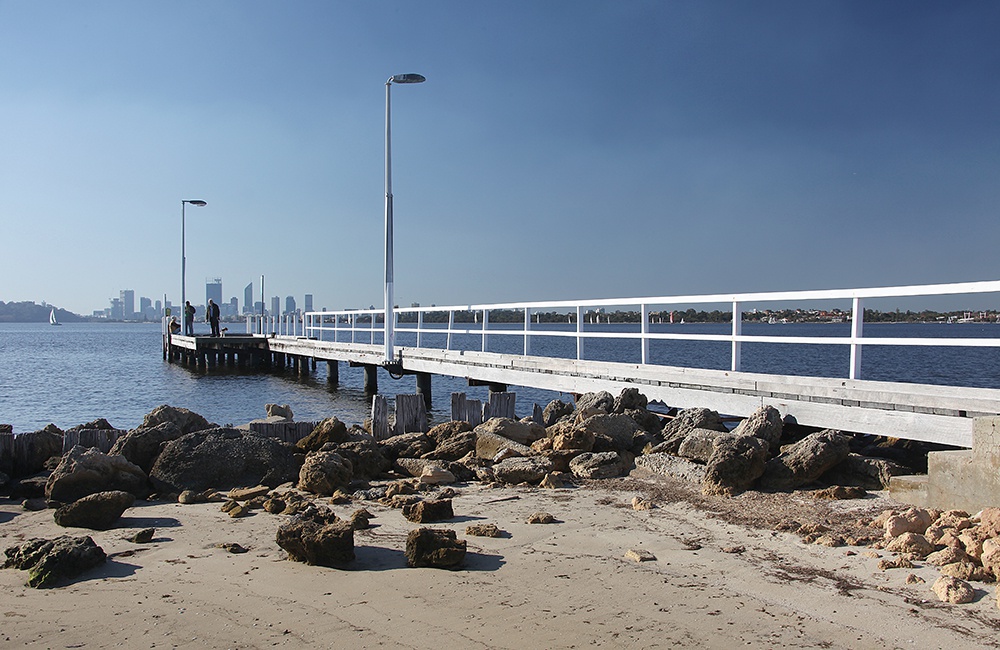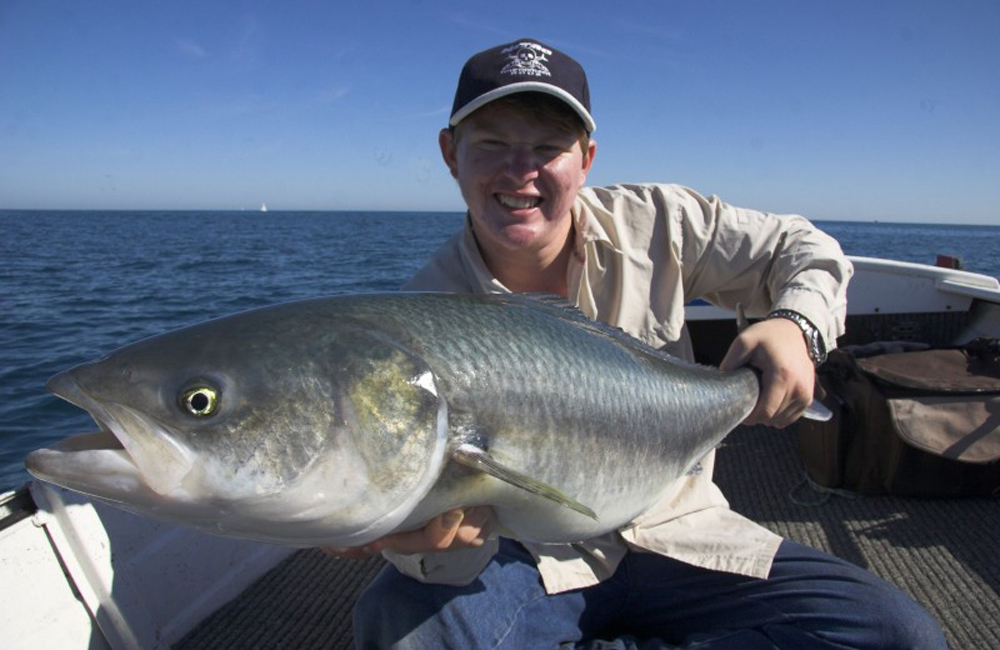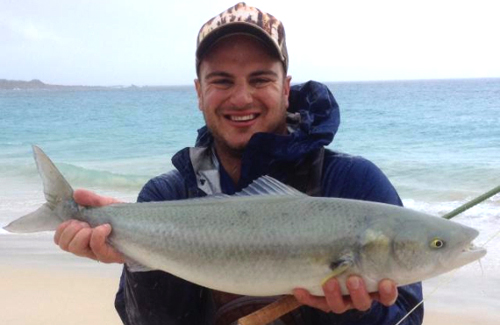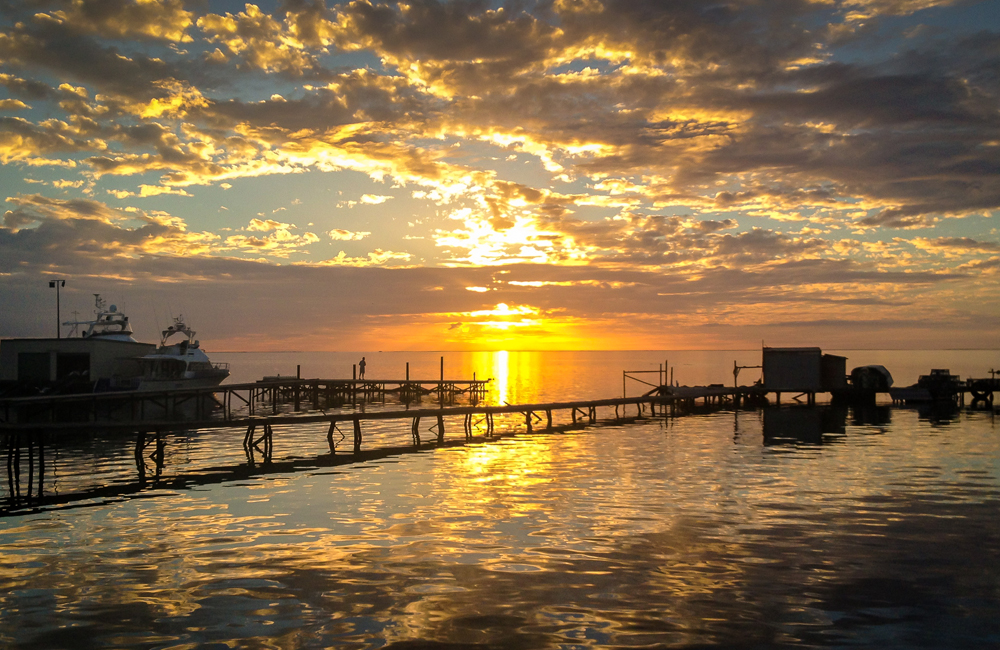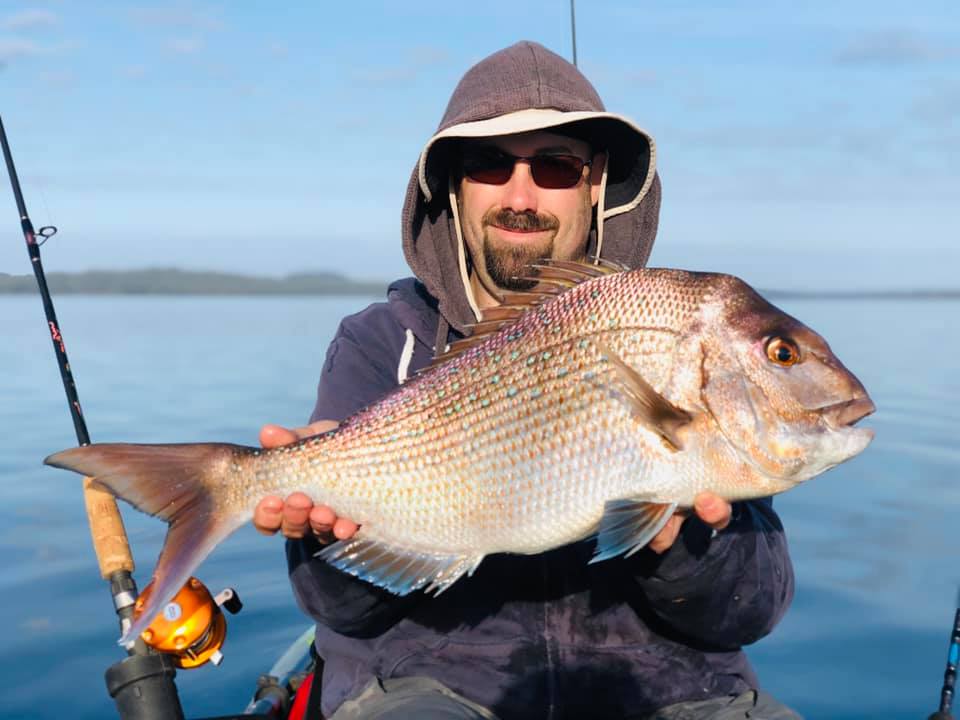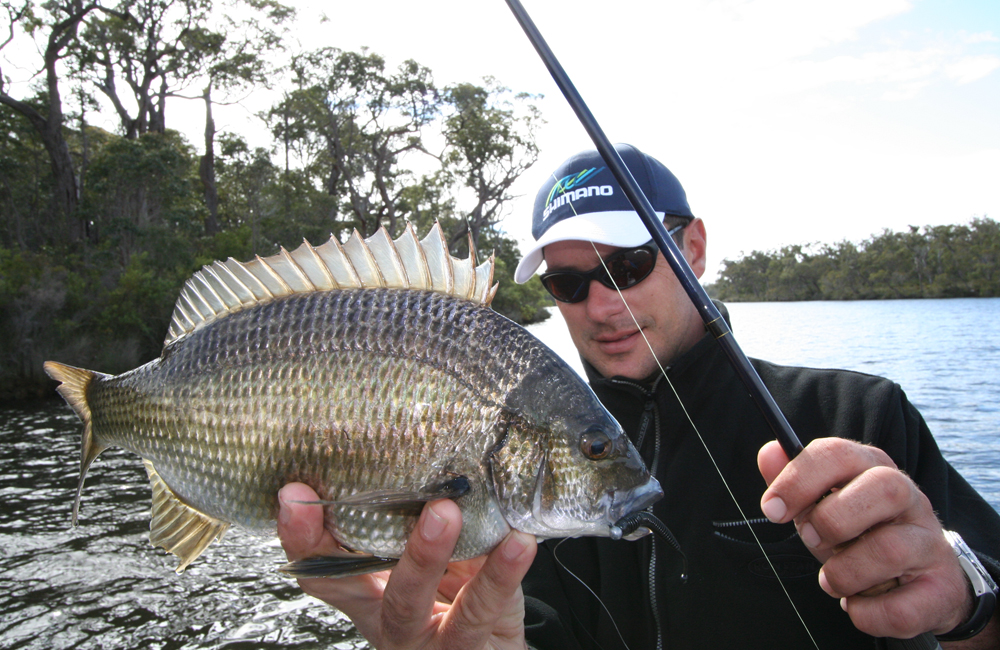Situated in Guilderton approximately 91kms north of Perth is the popular family fishing destination of Moore River. Discovered in 1836 by a European settler named George Fletcher Moore, the Moore River boasts some of the most picturesque scenery on the west coast.
Moore River is a great fishing destination for families as the calm waters provide a safe place to fish for beginners and children.
There is a section of the Moore which has large sand dunes that spill down into the river, and over the years, many a child (or child at heart!) has slid down these dunes on a piece of cardboard or an old car bonnet.
Moore River
The sandbar at the mouth of the river seals it from the ocean for most of the time, however as the river is fed by about 50 freshwater springs, the sand bar opens and closes many times a year.
About half a dozen of these springs run into the river in the lower reaches and can be navigated by a small boat or kayak. These springs run all year round, breaking the sandbar all through the summertime. When the bar does break, the fishing at the mouth can be sensational with mulloway and tailor ready and waiting to devour whatever comes spilling out of the river.
Where to fish
The mouth of the river and coastline north and south of it offer good beach and reef fishing for tailor, whiting and herring, as well as the odd mulloway, however the southerly winds can be a bit of a problem.
The river itself is predominantly a bream fishery with a good range of fishing terrain and is a great spot for light tackle lovers.
The lower section of the river mainly consists of large flats and rock walls that drop off into deep water, and some snags that get thicker the further up you go.
Kayaks and smaller boats are best suited to fishing the river as it can get quite shallow in some places, especially if the sand bar has broken.
While not essential, an echo sounder is a handy piece of equipment to use here, not only to save your prop and find fish but to reveal the drop offs where the bigger fish are often found.
Tactics
If you’re after some bigger specimens, try casting at the rock walls. Also worth a try are the steep sand dunes on the south side approximately 1.5kms as the crow flies from the mouth of the river. This spot has been known to hold some bigger specimens so give it a go and you may have some luck.
Casting lures into drop offs and retrieving them up the slope can also be very effective.
Another method is to try casting beyond the silver flashes that can often be spotted on the clear, shallow flats. If you’re in the right position you can actually see the fish turn and chase your lure. Sight fishing is one of the most exciting ways to fish and polarised sunglasses are a must!
Further upstream, you can try casting a suspending lure deep into the snags and let it sit in the maze of branches to entice a hearty strike. Try your luck in the snags at Diamond Island just past the first hairpin bend. The bream are plentiful here and with a few well positioned casts you should be rewarded with some nice catches. If the sandbar has broken however, your best bet is to stick to the drop offs where the bream tend to go for refuge when the water is low.
Shore fishers can try along the north bank with river prawns on a running sinker and hook.
If you want to catch tailor and mulloway try the river mouth or head north up the beach to the rock groyne. Those with a 4WD can head north past the groyne to the big beach and fish the southern side of the reef. A tailor rig will generally do the trick for both species.
If the sandbar is broken, fishing at the mouth where the brown water meets the blue is a great place to try for big mulloway and tailor.
Find the best fishing spots Western Australia on our Where to Catch page, and for the latest catch information don’t forget to check out our fishing reports.
Tips for the area
- Research has shown bream at Guilderton are some of the slowest growing in the state so if you want to keep a feed, that is fine, but be mindful of the stocks and stick to bag and size limits.
- If you catch a larger bream consider returning it to the water to keep the breeding stock of this small system healthy.
- Four wheel driving activities to the north of the rock groyne are permitted but be aware that beaches can be very soft. It is wise to stick to the tracks unless you have checked out the area you would like to access first.
- Take all of your rubbish with you and put it in a bin when you leave the area.
- Stick to tracks and do not make your own.



